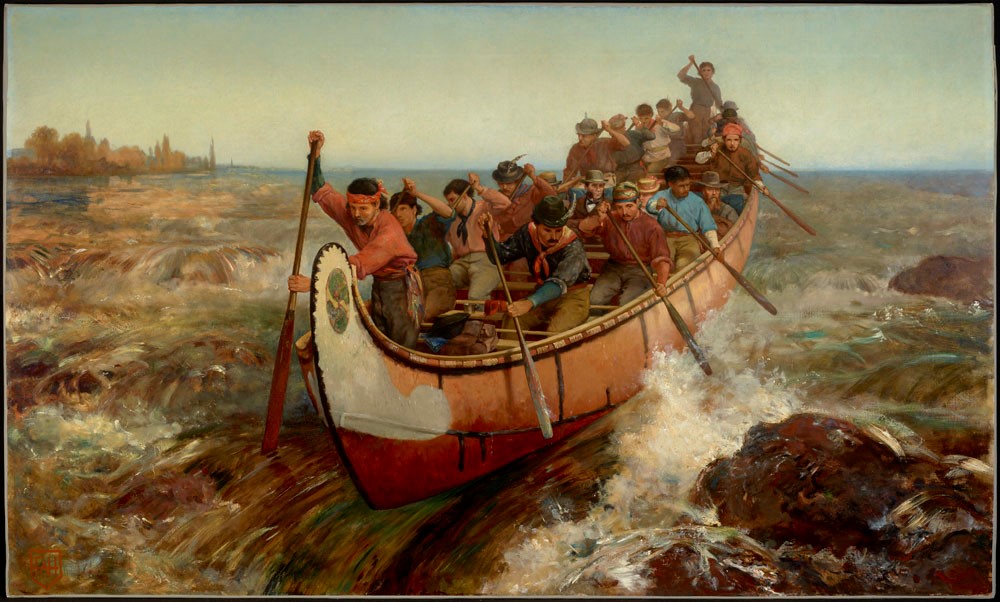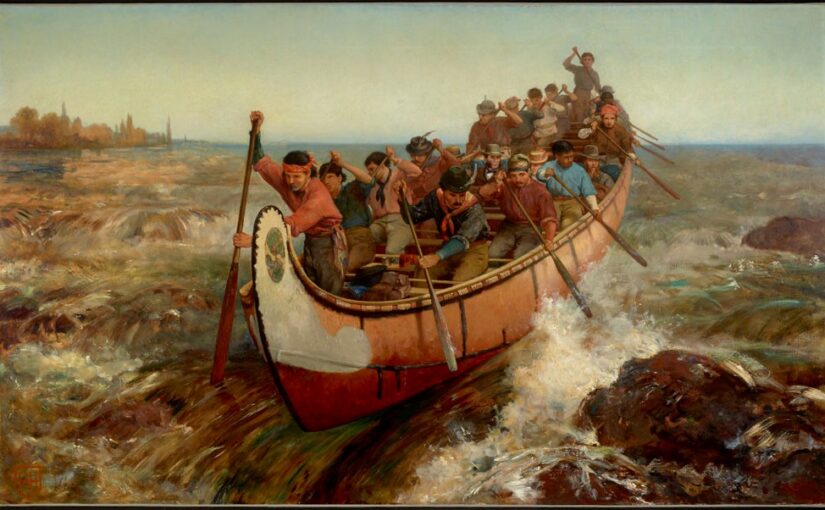Today’s post comes from Taylor Bottoms-Cau, a second-year Discovery student at Samuel de Champlain Provincial Park.
You’ve likely heard of the Group of Seven, artists who travelled the remote landscapes of Ontario to capture their rugged beauty by brush.
But they weren’t the only artists who travelled rough and painted what they saw!
Fifty years before the Group of Seven, Frances Anne Hopkins was roughing it in a voyageur canoe between Lachine (Montreal) and Fort William (Thunder Bay).
Getting started
Frances Anne Hopkins (nee Beechley) was born in England in 1838.
She married Edward Hopkins, who worked for the Hudson’s Bay Company, and moved to Lachine, Canada. This is where Hopkins’ earliest known works came from, often depicting scenes near their home.

In 1860, her husband was promoted to Chief Factor of Montreal, which led to the couple occasionally joining voyageurs on their journeys up the river, sometimes travelling all the way to Fort William by canoe.
These trips would take weeks of rough living with the men who paddled the canoe. The couple travelled along the shores of the Mattawa River, where Samuel de Champlain Provincial Park is located today.
A glimpse into the past
While the voyageurs paddled the canoe or set up camp, Hopkins would sketch what she saw. She documented the lives of voyageurs in her sketches in the same way we might take a photograph.
Most of her paintings depicting voyageurs were completed after she returned to London in 1870.
In this painting, called Voyageurs at Dawn, Hopkins captures the morning routine of voyageurs, from the way they slept under the overturned canoe to how they cooked.

However peaceful the scene may look, this image is actually a romanticized depiction of the voyageur lifestyle.
Voyageurs began their day at around 3:00 a.m. before the sun had risen, and would paddle for roughly 15 hours in a day. Many died before reaching their destination or ended their careers with their bodies irreparably damaged.
Shooting the Rapids is one of her most famous works, and in it Hopkins depicts the voyageurs in action as they paddle a set of rapids. She has also included herself, her husband, and two other passengers in the painting, sitting in the middle of the canoe (partially hidden by several voyageurs).

This snapshot of voyageurs at work shows the hierarchy on the river. Hopkins’ husband was high up in the Hudson’s Bay Company, so he did not have to paddle the canoe.
Artistic interpretation
Hopkins’ artwork received critical acclaim for her ability to maintain accuracy and artistic aesthetic simultaneously in her paintings.
Many of her works, such as Canoes in a Fog, and Running a Rapid on the Mattawa River were displayed at the prestigious Royal Academy exhibition in England during her career.
By the time Frances Anne Hopkins began documenting the voyageurs’ lives, the need for them was diminishing.
Faster travel methods such as trains and steamboats were becoming popular, and the demand for furs was decreasing (as were the number of beavers).
However, one could argue that she arrived in the canoe just in time to capture the final years of the voyageurs before they could truly fade away.
Want to learn more?
Frances Anne Hopkins’ legacy is intertwined with that of the voyageurs, and copies of her art are featured prominently on many websites about them.
You can even see copies of some of her most famous works here at Samuel de Champlain Provincial Park’s very own Mattawa River Visitor Centre.
A female artist who documented the lives of voyageurs through art, Hopkins has given us an incredible opportunity to peer into their lifestyle.
After all, a picture is worth a thousand words.
